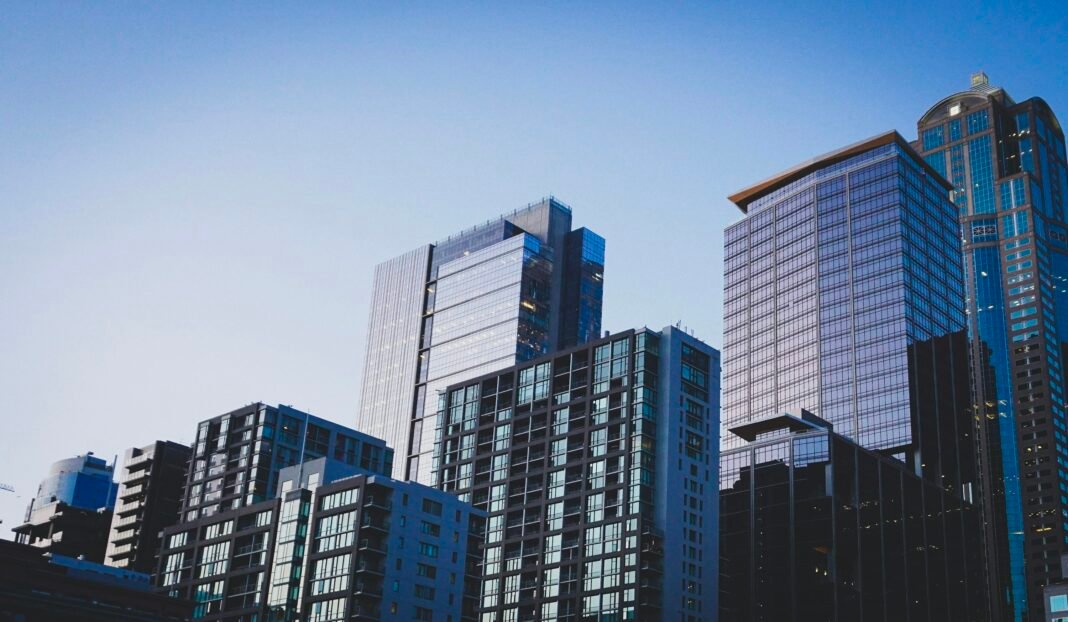News
Metro Max: Built-up Footprint Grows 2X in Top 8 Metros Over 30 Years

Gurugram, September 10, 2025: The cumulative urban built-up footprint has grown 2x in India’s top-eight cities, as per online real estate portal Square Yards latest report, ‘Cities in Motion – Tracing 30 Years of Urban Expansion in Key Indian Cities’. A total of 2,136 square km of urban built-up footprint was added since 1995, with the current built-up area reaching 4,308 square km in top-eight cities of India. The analysis covers urban areas of top-eight cities of India which are also amongst largest urban agglomerations and real estate markets in the country including Ahmedabad, Bengaluru, Chennai, Delhi NCR (Delhi, Gurugram, Noida & Greater Noida, Faridabad, Ghaziabad), Kolkata, Hyderabad, Mumbai MMR, Pune.
The urban built-up footprint is defined as the total land area within a city or settlement that is physically covered by human-made structures such as buildings. It represents the visible spatial extent of urbanization, separating developed land from open or natural areas.

Tanuj Shori, CEO & Founder, Square Yards, “India is stepping into the biggest urban transformation in its history. Around the world, cities drive more than 80 per cent of GDP, and for India too, the journey to becoming a developed economy runs through its urban centres. By 2050, India will add more than 330 million people to its urban population, the equivalent of absorbing the entire population United States into its urban fabric. This unprecedented migration means close to 100 million new homes must be built, alongside massive investments in transit, infrastructure, and services. We’re already seeing this play out in major cities of India where skyscrapers, dense cores, and thriving business districts are reshaping how we live and work. Our latest report shows just how dramatic this change has been. The urban built-up footprint across the top-eight cities has doubled since 1995 to 4,308 sq km in 2025. And while metros continue to dominate, the real excitement is also in Tier 2 and 3 cities, where better infrastructure and capital flows are powering the next wave of growth.”
Highlights of the Report
Ahmedabad
Ahmedabad’s built-up area expanded by 102 per cent, growing from 141 square km. in 1995 to 285 square km in 2025, an increase of 144 square km. This growth reflects the city’s economic diversification from an industrial base to include finance, IT, and automotive sectors, with visionary projects like GIFT City acting as a key driver.
Bengaluru
Bengaluru’s built-up area grew by 186 per cent, the second-highest rate among the cities. Its footprint expanded from 174 square km to 489 square km, an increase of 315 square km. This expansion has been fuelled by sustained growth in the technology sector and strategic infrastructure investments like the Namma Metro.
Chennai
Chennai experienced 137 per cent growth in its built-up area, expanding from 197 square km to 467 square km and adding 270 square km. The city’s diversified economic base, including its established automotive sector, a growing IT industry, and a prominent medical tourism hub, has driven this steady urban development.
Delhi-NCR
Delhi-NCR added the largest quantum of urban built-up land area at 400 square km., resulting in a 71 per cent increase from 567 square km to a total of 967 square km, the largest footprint among the cities. This development reflects its evolution into a polycentric economic region, supported by large-scale infrastructure projects connecting its various industrial, tech, and financial hubs.
Hyderabad
Hyderabad’s built-up area increased by 95 per cent, growing from 267 square km to 519 square km., an addition of 252 square km. The report links this expansion to supportive government policies that have cemented its status as a premier destination for the technology and pharmaceutical industries.
Kolkata
Kolkata’s built-up area grew by 87 per cent, expanding from 328 square km to 611 square km and adding 283 square km of urban built-up footprint. The city’s role as Eastern India’s primary IT hub has anchored this growth, which is further supported by the development of planned townships and critical infrastructure upgrades.
Mumbai MMR
The Mumbai Metropolitan Region recorded a 43 per cent expansion, the lowest among the eight cities, growing from 412 square km to 588 square km. and adding 176 square km, despite being second most population region India. This figure reflects the region’s high-density, vertical development model, where growth is managed through upward construction and major infrastructure projects designed to improve connectivity.
Pune
Pune recorded the highest rate of urban expansion at 332 per cent, growing from 86 square km in 1995 to 373 square km in 2025 and adding 287 square km of built-up area. This significant growth is attributed to the city’s successful transition from a manufacturing base to a global hub for the IT and start-up sectors.

 News4 weeks ago
News4 weeks agoMaharashtra Govt and Lodha Developers sign Rs 30K-Crore MoU for Green Integrated Data Centre Park

 News4 weeks ago
News4 weeks agoUP RERA launches 20th Real Estate Agent Training Program at Gautam Buddha Nagar

 News4 weeks ago
News4 weeks agoHCBS Developments Appoints KBE as Construction Partner for Twin Horizon in Gurugram

 News4 weeks ago
News4 weeks agoWehouse Raises ₹25 Crore Series A Funding to Expand Tech-Driven Home Construction Across India

 News4 weeks ago
News4 weeks agoRISE Infraventures Strengthens Leadership with Appointment of Ajay Malik as CSO

 News4 weeks ago
News4 weeks ago‘Real Estate to Scale up Office and Industrial Assets Beyond 2 Billion Sq Ft By 2047’

 News2 weeks ago
News2 weeks agoSpectrum@Metro Brings Biggest Dandiya Night to Noida on September 27

 News4 weeks ago
News4 weeks agoIndia’s Logistics & Industrial Leasing Hits 30.7 MSF in H1 2025; Poised to Cross 60 MSF by Year-End: Cushman & Wakefield



























